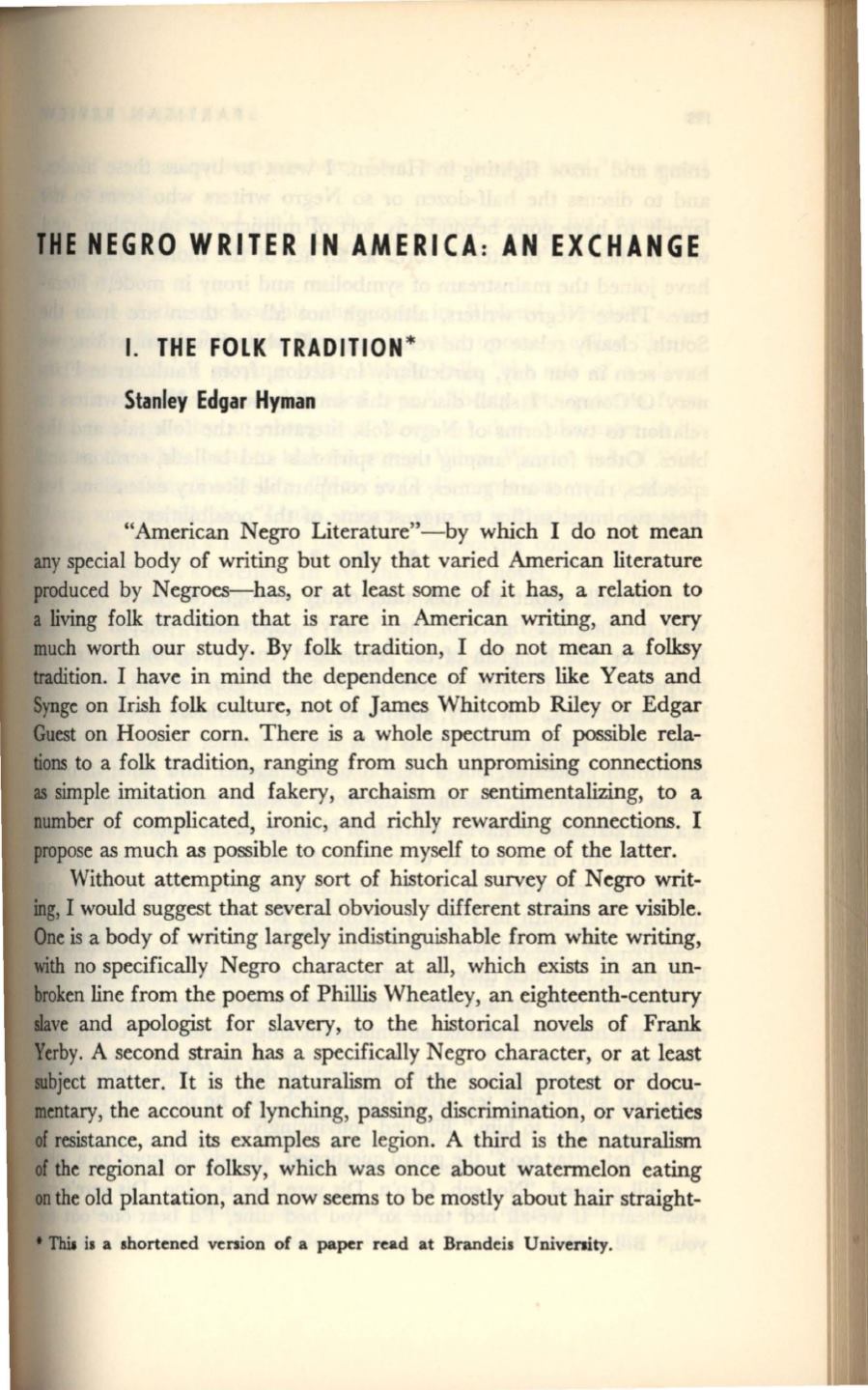
THE NEGRO WRITER IN AMERICA: AN EXCHANGE
I. THE FOLK TRADITlON*
Stanley Edgar Hyman
"American Negro Literature"-by which I do not mean
any special body of writing but only that varied American literature
produced by Negroes-has, or at least some of it has, a relation to
a living folk tradition that is rare in American writing, and very
much worth our study. By folk tradition, I do not mean a folksy
tradition. I have in mind the dependence of writers like Yeats and
Synge on Irish folk culture, not of James Whitcomb Riley or Edgar
Guest on Hoosier corn. There is a whole spectrum of possible rela–
tions
to a folk tradition, ranging from such unpromising connections
as
simple imitation and fakery, archaism or sentimentalizing, to a
number of complicated, ironic, and richly rewarding connections. I
propose as much as possible to confine myself to some of the latter.
Without attempting any sort of historical survey of Negro writ–
ing,
I would suggest that several obviously different strains are visible.
One is a body of writing largely indistinguishable from white writing,
with no specifically Negro character at all, which exists in an un–
broken line from the poems of Phillis Wheatley, an eighteenth-century
Dve and apologist for slavery, to the historical novels of Frank
Yerby. A second strain has a specifically Negro character, or at least
Ilbject matter.
It
is the naturalism of the social protest or docu–
mentary, the account of lynching, passing, discrimination, or varieties
• resistance, and its examples are legion. A third is the naturalism
• the regional or folksy, which was once about watermelon eating
GIl
the old plantation, and now seems to be mostly about hair straight-
• Thia
il a shortened venion of a paper read at Brandeis Univenity.


